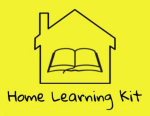Do you ever get the feeling that you’re interrogating your child when doing a lesson? Like when you’re doing a reading lesson and ask questions about the story, but you end up sounding like a detective from Law and Order. Meanwhile, your poor kid wants to go hide in a pile of stuffed animals. The Roll and Chat learning game is the perfect way to break up the inquisition and make your reading lessons more bearable, so your child doesn’t end up like this:

What you’ll need:
- The current book your child is reading
- A die or dice
How to Play Roll and Chat
If you’ve been homeschooling for any amount of time, you’re probably familiar with reading comprehension questions. “Who is the main character?”, “Where is the story’s setting?”, etc. You also probably know that going through these questions isn’t very interesting. To change that, we’re going to assign these reading comprehension questions to numbers. Your child will roll their die or dice, and then answer the corresponding question. I prefer to do this after each chapter is finished. Here are some examples of questions you might ask:
- What is the setting of the story?
- When? Where?
- Who are the characters?
- Who is the main character?
- Who are the supporting characters, if any?
- Are they a person or an animal?
- What lesson can you learn from the story?
- What is something the character does in the story?
- What do you see in the pictures?
- What happened in the beginning?
- The middle?
- The end?
- What questions do you have about the story?
- What would you ask the characters?
Elementary Assessments has an awesome list of reading comprehension questions if you’re looking for more variety! Also, if you’re wondering why this matters, these types of questions are directly related to the education standards your child needs to meet for success. For example, the questions above tie directly to the kindergarten standard, “With prompting and support, identify characters, settings, and major events in a story.” For more information about reading standards in the U.S. or in your state, check out Core Standards.
Wrapping Up
Hopefully throwing some dice into the mix will make your child’s reading practice go more smoothly. The important thing is to remember that it can take a lot of practice for children to develop these skills, so you need to exercise a lot of patience and encouragement. If your child is struggling with these questions, consider shortening the interval to less than a chapter and letting them refer back to the text. The last thing any parent wants is for their child to start hating to read.
I regularly post learning games for both reading and math. Sign up for my newsletter and the new games, plus a bunch of other teaching concepts and helpful tools, will be sent straight to your inbox when they’re posted. As a thank you, I’ll send you my free state-by-state homeschool guide!
Let me know how your lessons are going on social media. I’d love to hear the ways you make reading comprehension lessons more fun!

